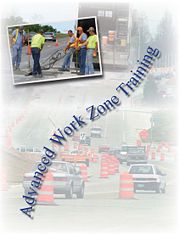Difference between revisions of "616.22 Advanced Work Zone Training"
m (article construction) |
m (Clarification, per Traffic and the Incident Response Priority Team) |
||
| Line 13: | Line 13: | ||
The WZS’ actions directly impact the mobility and safety of a work zone. The WZS is responsible for knowing applicable standards, guidelines, interpreting plans, specifications, coordinating temporary traffic control requirements, meeting the requirements of the contract or field operation guidelines and supervising traffic control personnel. | The WZS’ actions directly impact the mobility and safety of a work zone. The WZS is responsible for knowing applicable standards, guidelines, interpreting plans, specifications, coordinating temporary traffic control requirements, meeting the requirements of the contract or field operation guidelines and supervising traffic control personnel. | ||
| − | + | ||
[[Category:616 Temporary Traffic Control]] | [[Category:616 Temporary Traffic Control]] | ||
Revision as of 08:11, 14 May 2010
| Training Course |
| Advanced Work Zone Training |
MoDOT is committed to providing safe and efficient movement of both motorized and non-motorized traffic through or around temporary traffic control work zones and providing protection for workers and equipment located within those work zones. MoDOT focuses its resources to emphasize roadway visibility in temporary traffic control work zones and traffic flow through those work zones.
To better educate those responsible for designing and managing temporary traffic control in work zone safety considerations, MoDOT has created this course, “Advance Work Zone Training”. The course is the third part of a curriculum pertaining to work zones. Upon completion of the course, the participants will be certified as a “Work Zone Specialist” (WZS). MoDOT will have a WZS involved in every aspect of the traffic control plan from preliminary to post-construction work.
The WZS’ actions directly impact the mobility and safety of a work zone. The WZS is responsible for knowing applicable standards, guidelines, interpreting plans, specifications, coordinating temporary traffic control requirements, meeting the requirements of the contract or field operation guidelines and supervising traffic control personnel.
